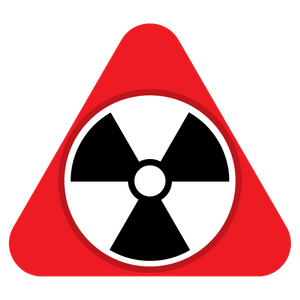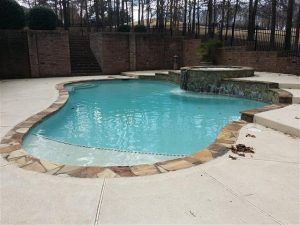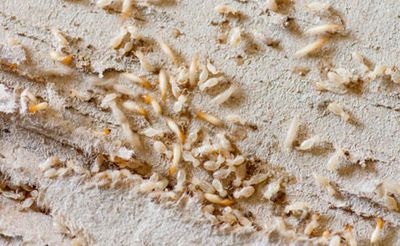Ancillary Services
Aerial Drone Survey
Even though we do walk on roofs when safely accessible, many roofs are not accessible due to height, slope, vegetation, etc. When defects or damage allow leaks in the roof, it often is not apparent for some time until deterioration and staining etc. work their way down to the upper level ceilings in the home. A small unmanned aircraft with camera can be used to inspect upper level roofing components and other surfaces not readily accessible or visible from the ground. Even with the simplest of roof shapes, if you can’t walk on the roof, there always areas that are not visible from the ground such as on the upper side of vent pipes, behind chimneys, etc. Drones can be invaluable in finding hidden defects! If you choose this option and the drone is not needed because we were able to walk on the roof, we will remove the fees before the invoice is paid. If we don't have approval to use the drone before the inspection starts, we will be limited to the accessible and visible areas of the roof.
Thermal Imaging
How Does Thermal Imaging Work?
All surfaces in the home emit infrared energy waves. A camera that is able to detect these waves can indicate the temperatures of the material. These temperatures can be used to determine such issues as missing or incorrectly installed insulation, damp surfaces caused by slow leaks where water stains are not yet visible, overheated electrical wires and or circuit breakers etc.
When is Thermal Imaging most needed?
Many times we are not able to get in or view all areas of an attic. If so, we can't verify if the area is properly insulated. It is not uncommon during a pre-drywall inspection for us to find incorrectly installed or missing insulation. Once the drywall goes up, the only way you are likely to find these defects is with a thermal imaging camera.
Many plumbing and or roof leaks involve slow dripping of water. This water may be absorbed into the drywall; the abnormal moisture may not generate a stain and be visible for some time. During that time extensive damage, fungal growth, etc. can occur. Thermal imaging may be able to detect these defects ling before the problems gets expensive.
Sewer Scope
Why should I be concerned about the sewer line?
Sewer line defects may not be common, however, when a problem occurs, it is almost always very expensive to repair. The simplest sewer line repair can be more than $5,000; extensive repairs can be more than $15,000. Even a simple un-clogging service can range from $300-$400; much higher than the sewer scope inspection.
Sewer defects may not be apparent during a brief home inspection. Although we do operate the water fixtures, flush the toilets, etc. some problems do not happen until the sewer line becomes filled with water. If the home is unoccupied, this may not happen during a normal home inspection. Only after you move in will you find the problem.
Repairs to sewer lines are EXPENSIVE! In older homes the pipes can be broken, deteriorated, clogged with dirt, grease, tree roots, etc. Newer homes are not immune to the problems. Unfortunately, during the construction process the sewer lines are often placed on loose soils that are not properly compacted before being covered with dirt. Gradually, the soils settle, taking the sewer pipe with it. This can create problems such as “bellies” or areas were water collects in the pipe resulting in clogging tendencies, or the pipes can in some cases be pulled apart. Costs to unclog a drain are typically $300 – $400 and costs to repair sewer lines can range from $3000 – $10,000 or more.
Homes that have been vacant for some time are particularly susceptible to problems because A brief home inspection will not likely uncover these conditions due to the ability of the sewer line being able to hold quite a bit of water before backing up. It is not uncommon for someone to live in the home for a week or more before the problems become apparent.
Where do you typically see sewer line problems?
New Homes: When a sewer line is placed in the ground, it is difficult to make the supporting soils perfectly flat and support all areas of the pipe. Over time, the soils may experience settlement; when the pipe settles with the soil, low areas or " bellies" form in the pipe resulting in increased tendencies for clogging.
Vacant Homes: Lack of constant water in the lines can cause tree roots to grow considerably in search of water. The roots can damage the pipe or collect debris in the pipe causing a clog and requiring a plumber to unclog the drain.
Old Homes: The drain lines used in older homes was typically either cast iron or clay pipe. The cast iron corrodes from the inside out and has a limited live span of about 50 years depending on the site conditions. Clay pipes become brittle and are susceptible to allowing root growth penetration at the poorly sealed joints.
What is a Sewer Scope?
A sewer scope refers to a lighted camera on the end of a long cable that is pushed down the sewer line from the access point near the planting beads at the exterior wall of the home to an area near the tap into the municipal sewer line usually near the street. Pictures and or video are usually used to record the conditions in the pipe. Damaged pipe, open joints, standing water, roots, clogs/debris, etc. can be found using this method.
Radon Gas Tests

What is Radon
Radon is a natural part of the environment. It is the result if decaying uranium in the ground, and is a carcinogenic gas that is hazardous to inhale. A build-up of radon gas in the home increases your chance of experiencing health hazards such as lung cancer. About 12 percent of lung cancers and more than 20,000 Americans die of radon-related lung cancer each year. The Surgeon General of the United States has issued a Health Advisory warning Americans about the health risk from exposure to radon in indoor air.
How is Radon Tested
We use laboratory approved and calibrated continuous electronic radon monitors to determine the average expected level of radon exposure in the home. Radon levels in the home fluctuate daily, seasonally, and with differing weather patterns. A good test would be considered a long-term test; between 1 month and 1 year. However, if this test is related to a real estate transaction, you will need a short term test. Depending on conditions, this will take between 2 and 3 days to complete. If time allows, we will set up the radon monitor in the home before the inspection so that you will have the results available on the day of the inspection.
Is there Radon in the Charlotte or surrounding areas?
Yes! Although on average, most homes in and around Charlotte do have radon levels below the EPA recommended maximum, there are definitely areas that have very high radon concentrations, both in uptown and in the surrounding suburbs. There is also a misconception that you don't need to worry about radon unless you have a basement. This is not true. Radon gas comes out of the ground; if your home is built over the ground where the gas is being emitted, you have elevated levels of radon! It even permeates through concrete.
Mold Testing

What do I need to know about mold?
Mold is a natural part of the environment; it grows on surfaces, but the spores become airborne and is in the air that we breath. The only things mold need to grow is food - any cellulose material like drywall paper etc. and moisture. According to the Bureau of the Census, 35 percent of homes are damaged every year due to water or moisture. Moisture on wood, cellulose, and other organic materials used in buildings provides the fertile platform for mold growth. Anyone can potentially be allergic to any type of mold; however, unless you have special health concerns, we typically do not assess mold in the course of a normal home inspection.
.
Common Places For Mold Growth:
- Basements: Even the best built home have basement walls that allow as much as 5 gallons of water to migrate from the ground into the living areas of the home during the rainy season. Basements frequently do not get he amount of air cooling/drying and or circulation needed to keep humidity levels low enough to prevent fungal growth.
- Crawlspaces: Excess moisture in the crawlspace is a notorious problem. As much as 30% +/- of the air in the crawlspace makes it's way into the living areas of the home. Chronic mold growth on the framing members in the crawlspace can cause deterioration of the joists and beams etc.
- Bathrooms: If there is insufficient ventilation in the bathroom, or the occupants do not use the ventilation, repeated high humidity levels can cause fungal growth.
- Any roof or plumbing leak: If a leak occurred inside of a wall cavity or other area, fungal growth can spread extensively and not be apparent without a mold survey of the home.
What is Mold Testing?
There are two basic methods for testing for mold. A direct sample can be taken of visible mold growth. Air samples can be taken to determine if abnormal airborne mold spores are present.
Limited Direct Sampling involves taking swab, tape, or bulk samples as directed by the client of visible fungal growths in the home. This is the least expensive and most direct method of identifying a known fungal source, and can easily be added to a normal home inspection as desired by the client. This is only appropriate if there are visible areas of fungal growth.
A Mold Screening includes a visual assessment of the entire home, identifies “red flags” for mold, and a limited sampling for mold taken at each “red flag.” This can be done as a stand-alone mold inspection, or in conjunction with a home inspection when a more thorough assessment is desired.
A Mold Survey identifies and determines causes, and provides corrective measures for all mold sources discovered in the entire home. It includes a visual assessment of the entire home, limited sampling of all “red flags,” and air samples of both inside and outside air.
ERMI/ARMI Testing: Since mold is widely present in the environment, and the study of molds adverse health effects is not an “exact science,” the EPA has developed the Environmental Relative Moldiness Index. This is a scale by which you can rate the amount of certain molds in a home against the national baseline set by the EPA. This test can be a relatively reliable method of determining if a Mold Survey is appropriate.
Need More Information?
Pool / Spa Inspections

Home Inspections do not include swimming pools, spas, hot tubs, etc. However, like other features in the home, repairs to a swimming pool can be costly. Getting a pool inspection of the basic condition and function of the related components can save you both money and headache.
What Is a Pool Inspection?
A pool inspection is an additional service of the home inspection process that will evaluate the condition and function of the following components:
- Pool liner or surface condition
- Coping edge
- Decking around the pool area
- Pool lights
- Pumps, valves, visible plumbing lines
- Pool heater
- Filter
- Electrical
- GFCI protection
- Fill valves
- Skimmers
- Safety drain covers
- Safety ledge
- Operation and function
- Perimeter fence
- And other related parts
We do not perform any tests that require filling or draining the pool or other invasive or destructive inspections.
How Long Will A Pool Inspection Take?
A pool inspection should only take an hour or two. Note that we only inspect pools and spas etc. along with and at the same time as a home inspection. To prevent scheduling conflicts, we do not pool inspections as a stand alone service.
Lawn Irrigation
Avoid Future Costly Problems
The lawn irrigation system is frequently the most neglected system of a home. Most do not properly winterize their system, exposing the water lines and valves to freeze damage. Some rarely use the system resulting damage and neglected maintenance of the components. You won't know if the system even works unless you get a lawn irrigation inspection.
How Can We Inspect Your System?
Though much of a sprinkler system is underground, we can examine the functioning of it through the parts that we can see, as well as through the overall function of the system as a whole. We will inspect:
- Function of the controller
- Function and condition of all sprinkler heads
- Function and condition of valves
- Function and condition of back-flow prevention devices
- Exposed water lines
- Exposed clamps and connections
- Look for evidence of leaks etc.
Private Water Wells & Water Contaminant Testing
Know What’s In Your Water
If your home is serviced by a municipal water source, it is routinely checked for contaminants; reports of these tests are available from the county. If your prospective home has a private on-site water well, there are no government or health department regulations requiring routine testing of the water quality. That means, when you buy a home it is your responsibility to know the quality of your water supply. Most health organizations recommend analysis of well water at least once per year and after any repairs made to the pump/well system.
Water wells and pumps are not included in a typical home inspection. A home inspection will only include those systems and components included inside, or part of the building itself. Newer wells and pumps are relatively simple and usually problem free. However, older systems and the wiring, insulation, water lines to/from the home etc. frequently do have problems and should be inspected.
Homes serviced by municipal water supplies, may only need to indicate any lead contaminants; where those serviced by well water should test for any combination of: bacteria, lead, nitrates, nitrites, turbidity, arsenic, radon, etc.
The most frequent contaminants found in North Carolina and South Caroline are:
- Bacteria: Possible cross contamination with an on-site septic systems or nearby animal farming activities.
- Arsenic: Union County of North Carolina has one of the highest average levels of Arsenic in the state!
- Lead: Typically comes from water distribution lines and fixtures in home built before 1979)
- Radon: Some areas of South Carolina frequently contain elevated levels of Radon in the ground water.
- Nitrates and Nitrites: Frequently caused by nearby agricultural activities.

We can test for:
The standard FHA/VA water test includes determining levels of:
- Bacteria
- Nitrates/Nitrites
- Lead
We can also test for:
- Arsenic
- Turbidity
- Radon
- Hardness
- PH level
- and other contaminants by request
Click on the links below to learn more about water wells and drinking water issues:
Termite Inspections (Provided by: Pest Specialist, INC)
Termites are small but can create devastating damage to the structural elements of your home. For this reason, it is important that you invest in a termite inspection — during this inspection we can identify the presence of current termite infestation and past damage. Know the detailed history of your prospective new home in Charlotte with a comprehensive termite inspection by Colony Home Inspections.

Most real estate transactions involving a re-sale property, as opposed to a new home, involve a wood-destroying insect or termite inspection, or more commonly referred to as a “Termite Letter” which many lending institutions require. Most new homes are required to be treated with pesticides during the construction process and should not be susceptible to immediate insect damage. Even if a Termite Letter is not required in your situation, you may choose to have this service provided as additional assurance or information. Some conditions relevant to potential insect damage, may not, by licensing board requirements, be included in a home inspection report. You would need both a home inspection and a termite inspection to receive a more complete assessment of the property.
Other wood destroying insects include:
- Sub-Terranean Termites
- Powder Post Beetles
- Old House Borers
- Carpenter Bees
- Carpenter Ant
Pest inspection services are provided under license agreements with Pest Specialist, Inc.
